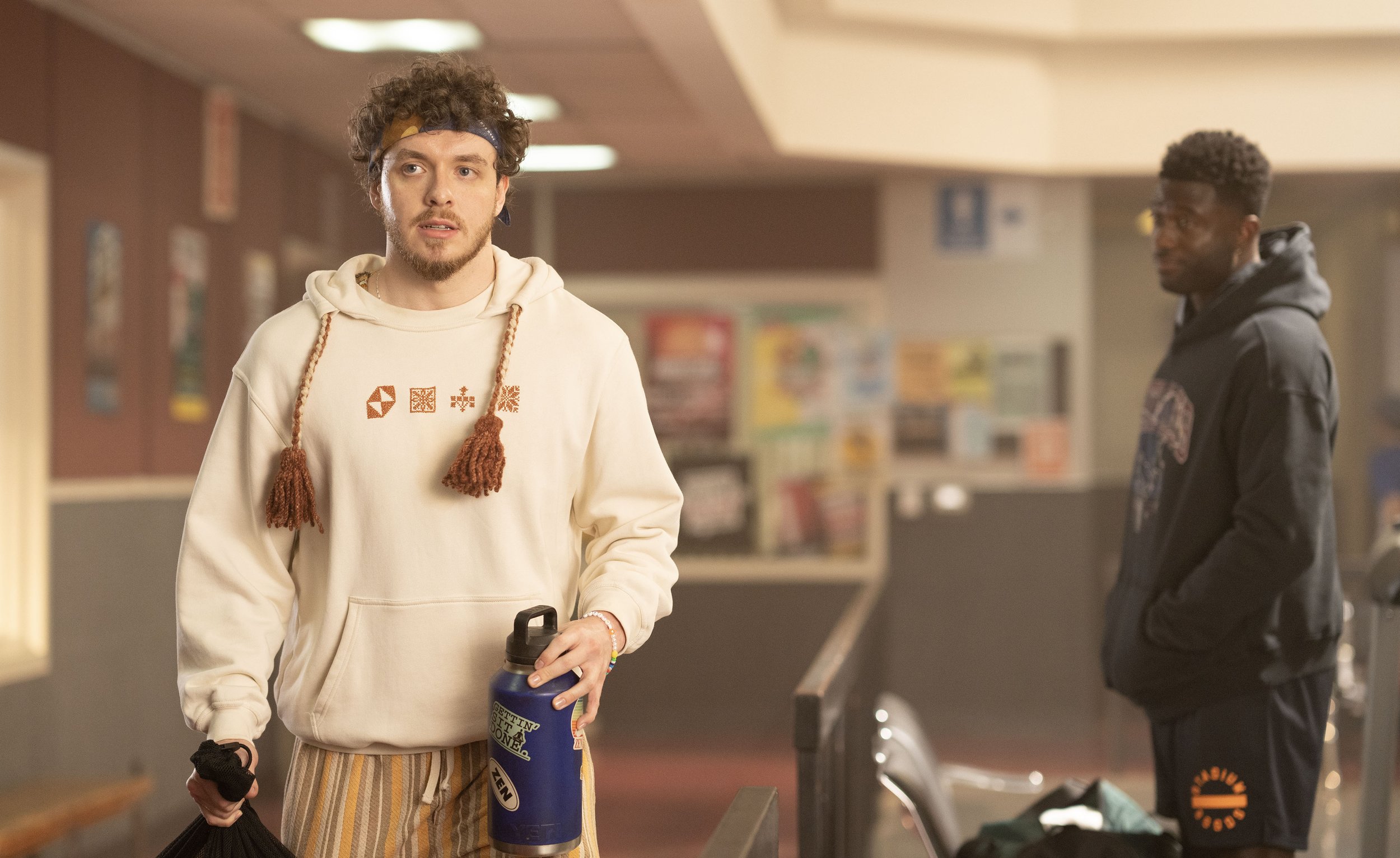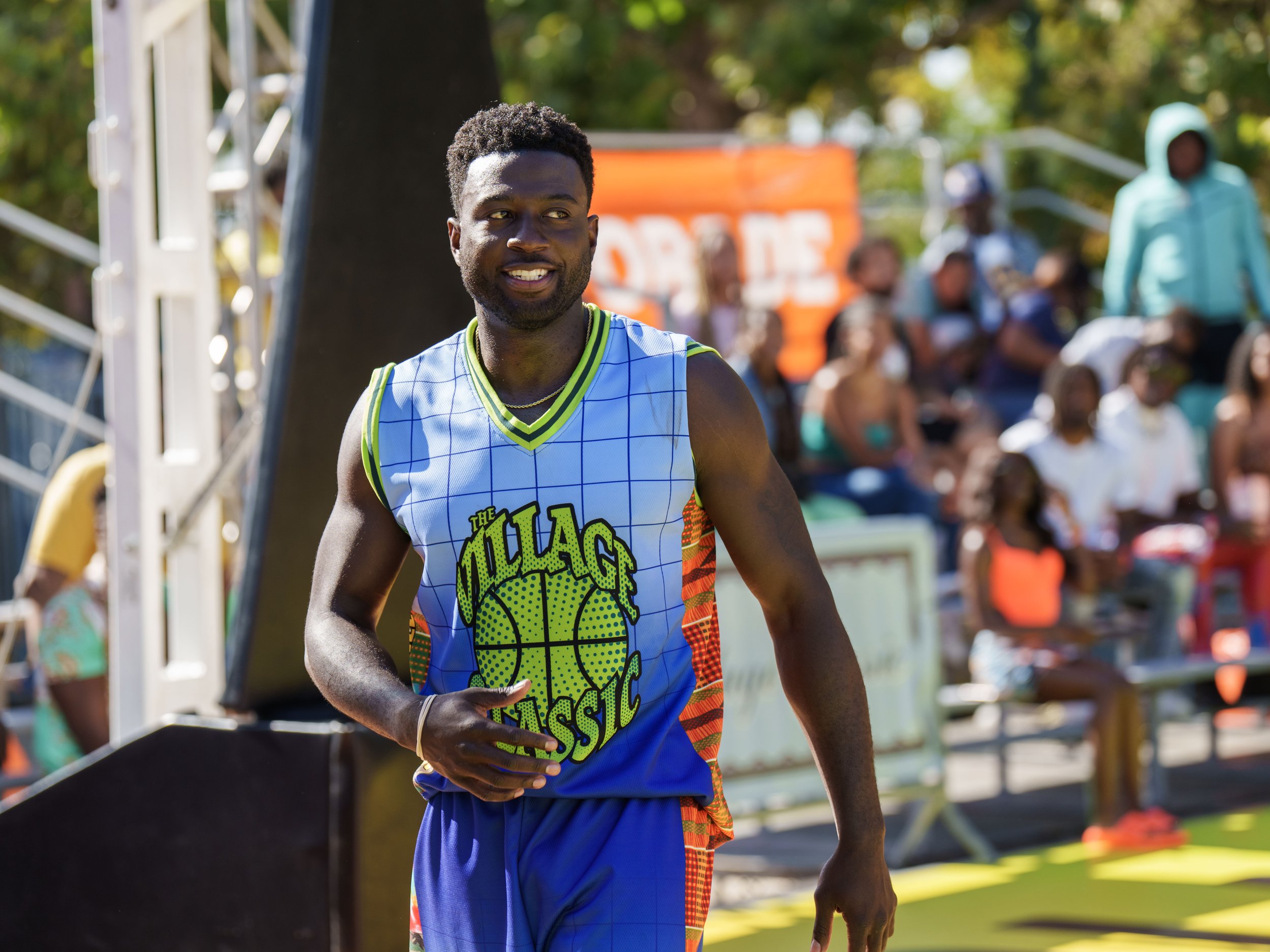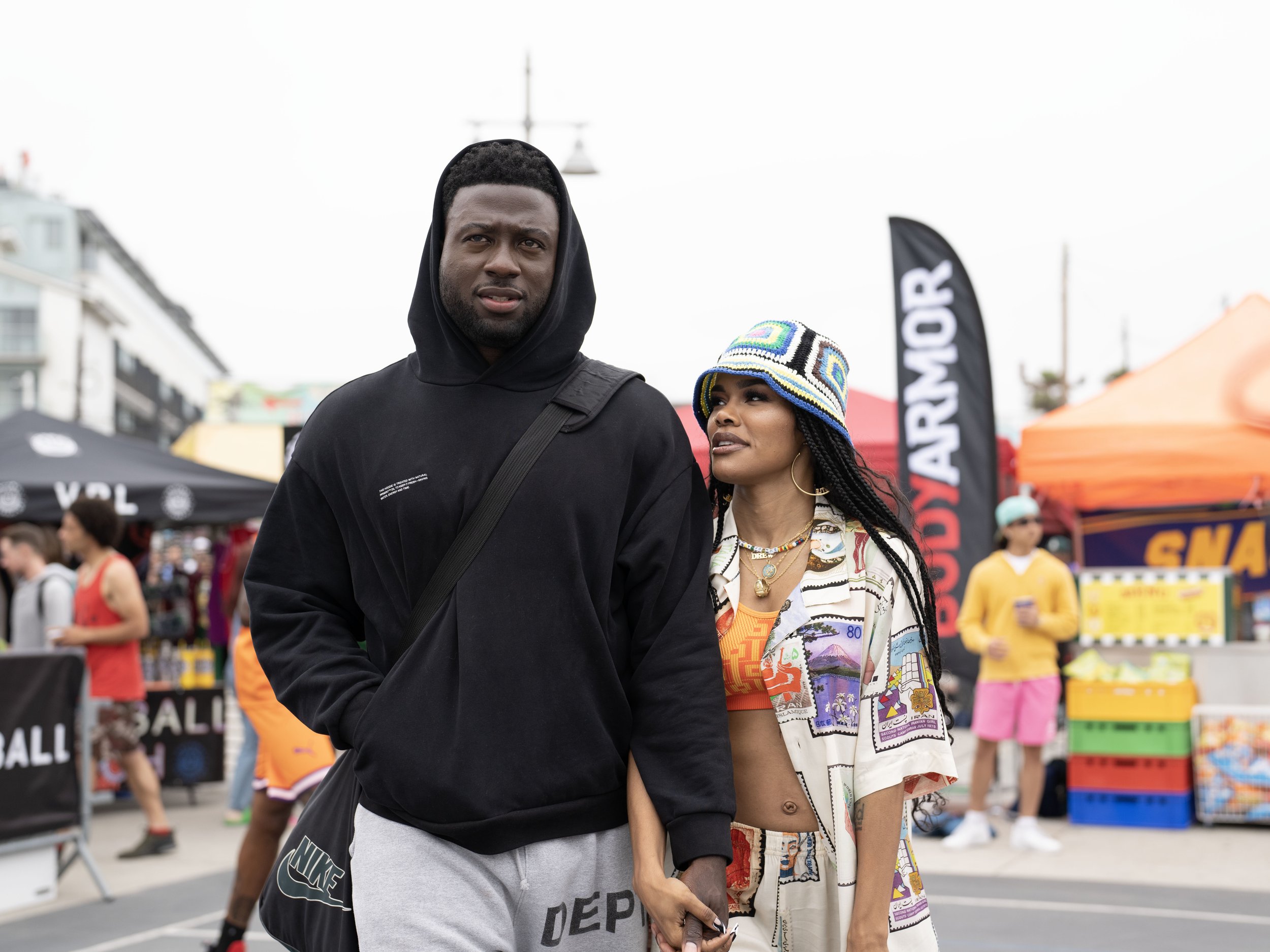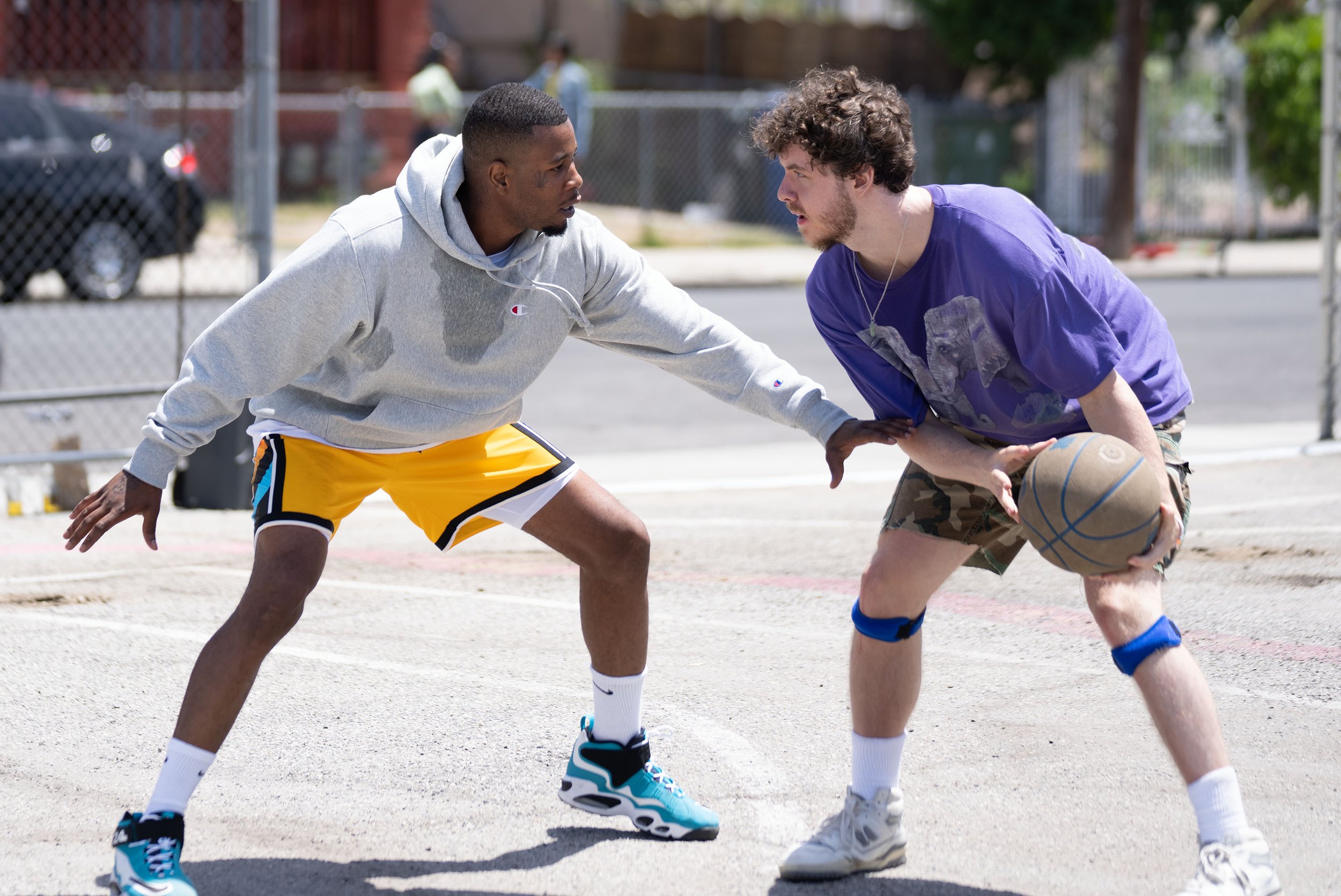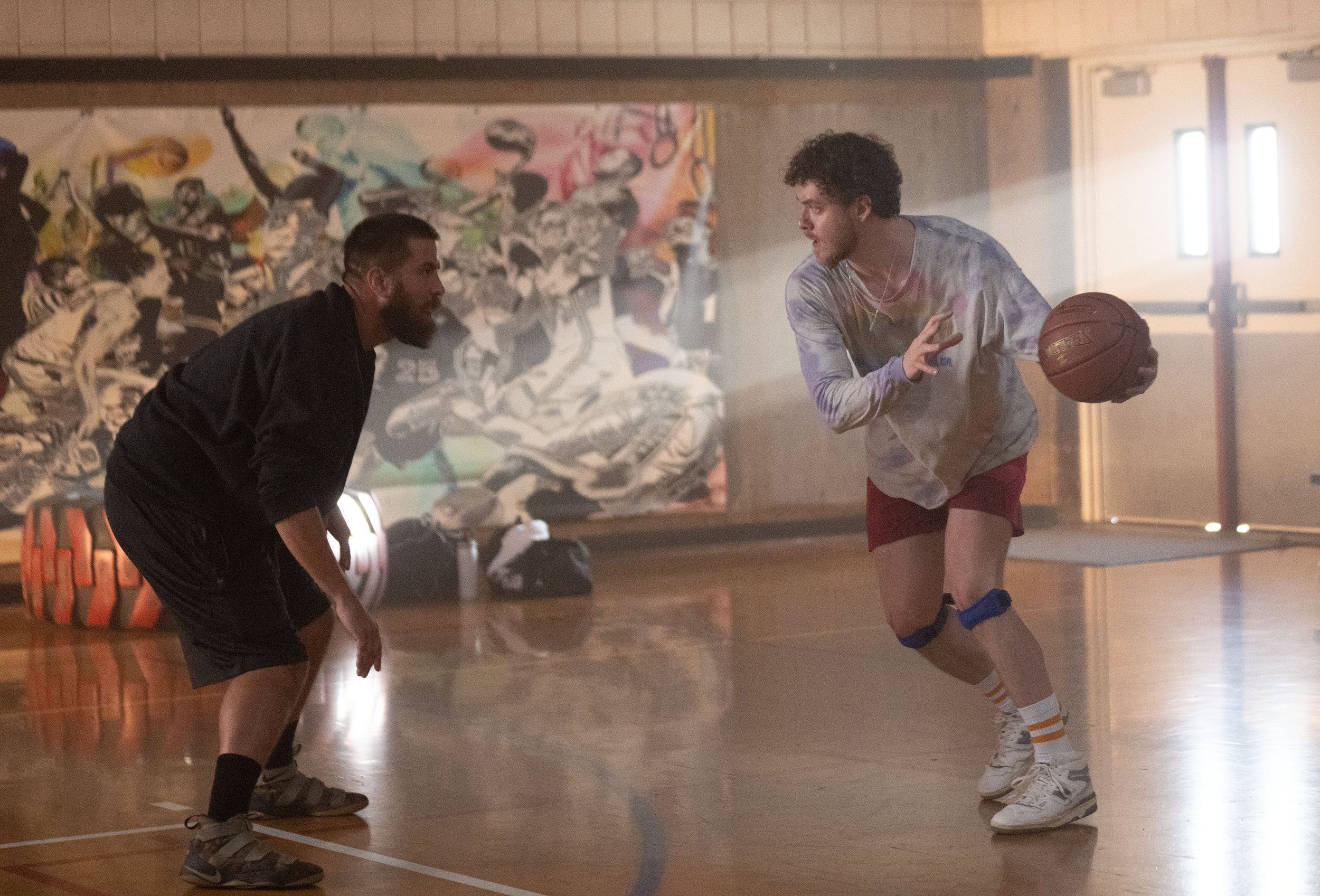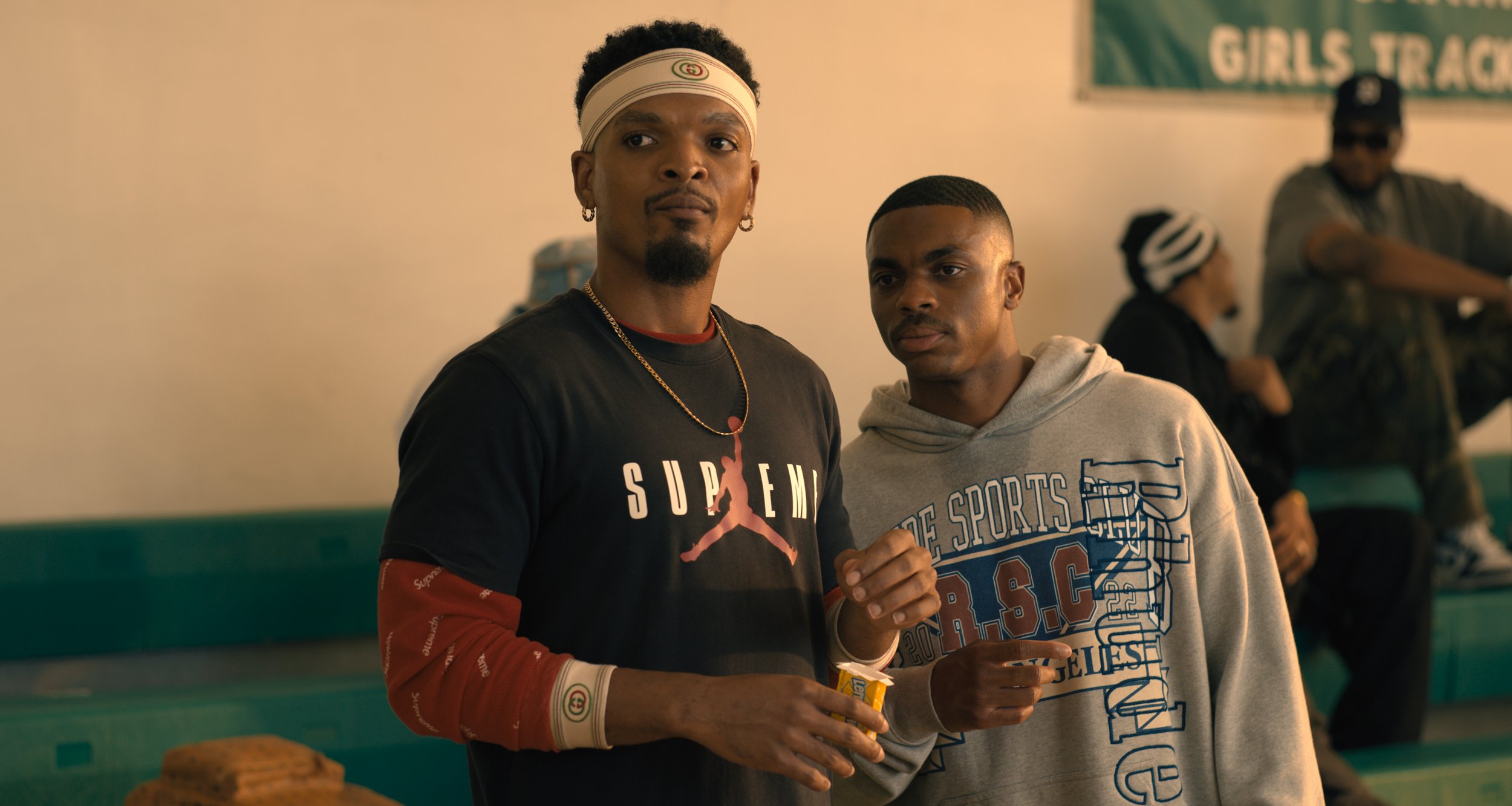MOVIE REVIEW: White Men Can't Jump
WHITE MEN CAN’T JUMP– 2 STARS
One has to at least hope that some form of wisdom coming from the passage of time goes into the filmmakers inspired to remake a well-known movie. Here we have White Men Can’t Jump, debuting on Hulu. Somewhere, ultra-successful TV creator/writer Kenya Barris (Black-ish, You People) saw and loved the previous version and felt there was something new to say. He saw a window to present evolution with basketball’s place in pop culture as well as the racial dynamics that stirred up Ron Shelton’s 1992 classic.
Ambition like that cannot be completely faulted. Perceptible boldness goes into undertaking remakes, big or small. Still, what if a remake like White Men Can’t Jump turns out to not have new points to solidify and actually comes out saying less than the original? Well, from “airball” to “brick,” basketball has all sorts of slang terms for a missed shot. Pick your favorite and its level of error and severity.
This White Men Can’t Jump is very rooted in the modern era. Kamal Allen (Sinqua Wells of Nanny and the upcoming The Blackening) was a former highly-touted national high school prospect coached by his father (the late Lance Reddick, in one of his final roles) who had an well-documented assault incident with a group of fans that cost him his college ride. In the decade since, Kamal has become a father of one son to his girlfriend Imani (Teyana Taylor of Coming 2 America) trying to hold down dead-end jobs and avoid the embarrassing limelight of his fortune-costing failure. He’s never lost a step on the court, but avoids organized basketball and sticks to pick-up games at his local high school.
LESSON #1: LOOK THE PART OF A MARK– Enter Jeremy, played by Grammy-nominated rapper Jack Harlow. He’s the shaggy white dude walking into this high school gym rocking mandals and a self-help sweatshirt, pitching homemade detox juices, and looking for a game. Sticking out like a sore thumb, he looks like an easy mark when, lo and behold, he’s a former college standout from Gonzaga. One shooting challenge later and he lifts a few hundred bucks from Kamal and company, pulling off the hustle with book cover-judging ease.
Despite the scheme, Kamal recognizes Jeremy’s talent and sees a mutual need for a partnership. Both men are in need of money to support their girlfriends’ career endeavors. Imani is a hairdresser looking to open her own business while Jeremy’s squeeze Tatiana (Spider-Man: Homecoming’s Laura Harrier) is a budding professional dancer. Jeremy is also trying to scrape together money for regenerative STEM cell treatments to better heal his two blown ACLs in order to make a run at his dream of the NBA G-League. The $25,000 prize money from an upcoming local 2-on-2 tournament would help those goals nicely, so Jeremy and Kamal work together to score the cash for the contest’s entry fee.
LESSON #2: FRIENDS RUBBING OFF ON ONE ANOTHER– Despite their different backgrounds and temperaments, our two players click together. On the court, Kamal’s bounce and Jeremy’s handle dominate lesser opponents. Between games off the court, Jeremy’s effusive and humorous mumbo-jumbo for meditation and holistic practices begin to calm Kamal’s prideful triggers while Kamal’s family man honesty rubs off on the ne'er-do-well lying of Jeremy. For the better, the two initial strangers ingratiate and compliment each other’s lives.
From a casting standpoint, no one was going to match Wesley Snipes and Woody Harrelson, so Barris and House Party director Calmatic didn’t try. The real find is Jack Harlow making his acting debut. He shows off a very persuasive gift of gab that takes over the movie anytime he’s around. With Sinqua Walls, they found a beefier athlete willing to exhibit more concrete shame as the main character’s building block as a difference from Snipes’ more slippery cutthroat. Jack’s a head-turner, but the movie needed two, not one, and that’s where the losses begin for White Men Can’t Jump.
LESSON #3: GET THE SPORT RIGHT– Forgive the venture into the objective realm, but there are two chief traits that needed to be fulfilled for any movie to call itself White Men Can’t Jump. The first has to do with the sport itself. The basketball scenes have to look genuine, and that quality has to come from the cinematographer, the editor, and the actors. Anyone can fake a jump shot that cuts to a ball squishing in a hoop from another take or camera position. On a film like this, the actors have to be coached up to look credible and the camera has to stay on to capture it.
Shelton’s original pulled off that illusion perfectly. The effect is reduced to about 50-50 in this White Men Can’t Jump. Once upon a time, Sinqua Walls played college ball at the University of San Francisco and Jack Harlow showed off his natural talent at the 2022 NBA Celebrity All-Star Game. Even with those backgrounds, basketball coordinator Aimee McDaniel (The Way Back, Air), stunt coordinator Nico Woulard (TV’s Blindspotting), and a trio of stunt doubles for Walls and Harlow still has to boost the boys and cover their limitations. Call that a noticeable reduction on the scorecard.
LESSON #4: TALK THE TALK– For better or worse when it comes to aging well, the second key component is the volume of trash talking in White Men Can’t Jump. The onslaught of ball-busting riffs and spiteful confrontations between Snipes and Harrelson– whether they were conceived in Ron Shelton’s screenplay or riffed on the spot– are legendary. Add in an unafraid and impetuous Rosie Perez, and all the tough talk made the whole movie when balls weren’t being dribbled.
This White Men Can’t Jump remake isn’t afraid of four-letter words, but most of the poisonous hilarity has been de-venomized by Barris and co-screenwriter Doug Hall. They are quick to inject lines like “That race shit is dated” as if it is stepping around greater possible commentary instead of through it. Moreover, the new film does not go beat-for-beat with the original by removing the background criminal debt-collection threats and most of the gangland menace that gave the 1992 version extra stakes. The hustles back then were simply harder and more dangerous.
What replaces those external conflicts is internal angst from two men who aim to be more sensitive than competitive. Nothing’s really going to happen to anyone, outside of a touchy breakup or two, if they fail. That’s borderline character betrayal and counts as another miss. While a modern 21st century maturity against frank toxic masculinity was infused to be appreciated, there is an unmistakable edginess that is missing, top to bottom in White Men Can’t Jump.
LOGO DESIGNED BY MEENTS ILLUSTRATED (#1119)


